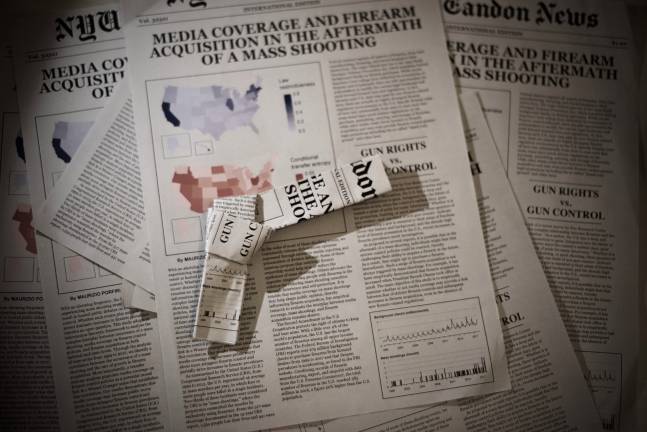News coverage of gun control policy linked to increase in gun purchases

For the first time, researchers have shown a causal link between print news media coverage of U.S. gun control policy in the wake of mass shooting events and increases in firearm acquisition, particularly in states with the least restrictive gun laws.
The results of a study led by researchers at NYU Tandon School of Engineering, in collaboration with faculty at the UCLA Fielding School of Public Health and Northeastern University, are rooted in a data-driven approach that reveals causal relationships, rather than mere correlations. It is the first study to quantify the influence of news media stories on firearm prevalence.
The study was published in June in Nature Human Behaviour.
Increases in firearm purchases following mass shootings are well-observed phenomena, likely driven by concerns that these events could lead to more restrictive gun controls. Lead author Maurizio Porfiri, NYU Tandon professor of mechanical and aerospace engineering, noted that this is the first study to empirically examine — and confirm — the link between news stories specifically about gun policy and increased acquisition of firearms. However, in one surprising finding, the analysis revealed no causal link between an actual mass shooting and gun purchases. Previous studies had noted a correlation between the two.
The latest study quantified influences among the three variables: mass shooting events, media coverage of gun control policy and regulations, and firearm acquisition. Researchers analyzed 69 mass shootings in the United States between January 1999 and Dececember 2017, gathering data on the number of firearm background checks per month (a proxy measure for gun purchases), along with all print news coverage of firearm control policies that appeared in The New York Times and The Washington Post during that same period — more than 9,700 documents.
The increases in firearm background checks were most pronounced in states with the least restrictive gun control policies — including Alabama, Arkansas, Florida, Idaho, Kansas, Ohio, and Oregon — and less dramatic in states with stronger restrictions on gun ownership. The team found no significant links between other variables.
“This study provides the critical insight that media coverage appears to mediate the increase in firearm acquisition following mass shootings,” Porfiri said.
“The public health impact of firearm-related physical injury has dramatically increased over recent years and is now a leading cause of death,” said James A. Macinko, a co-author of the study and professor of health policy and management and community health sciences at the UCLA Fielding School of Public Health. “Our study suggests the need for dialogue around how mass shooting events are discussed by the press, in order to find ways to mitigate unintended consequences.”
Source: University of California at Los Angelese: newsroom.ucla.edu